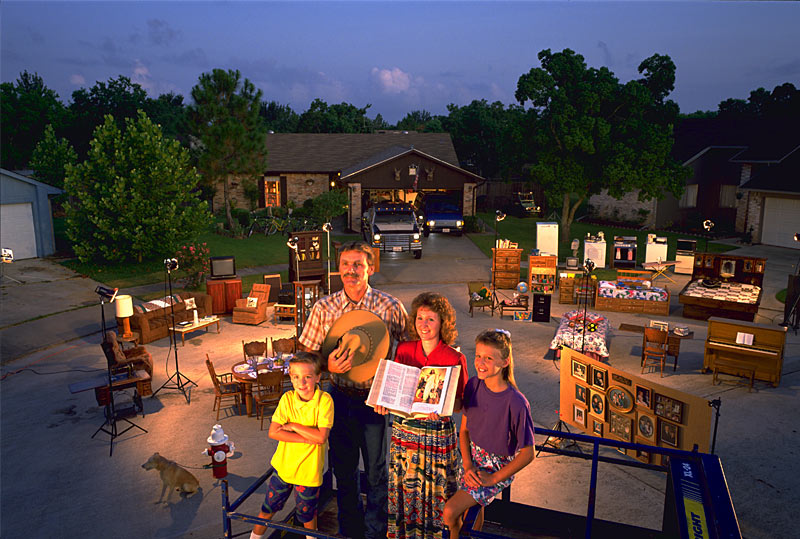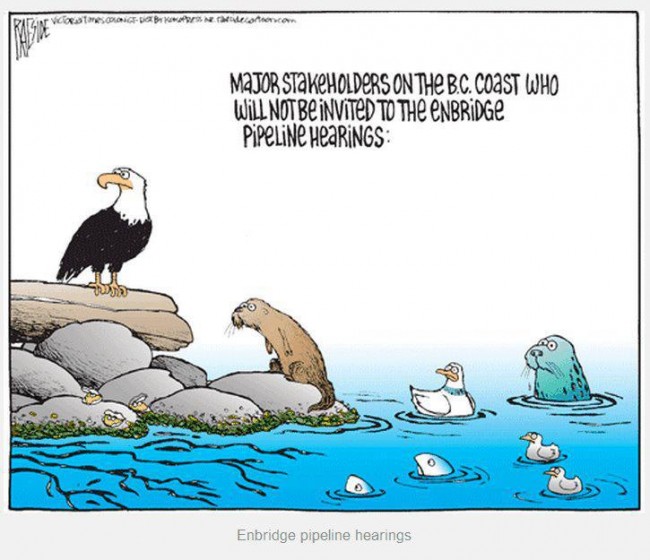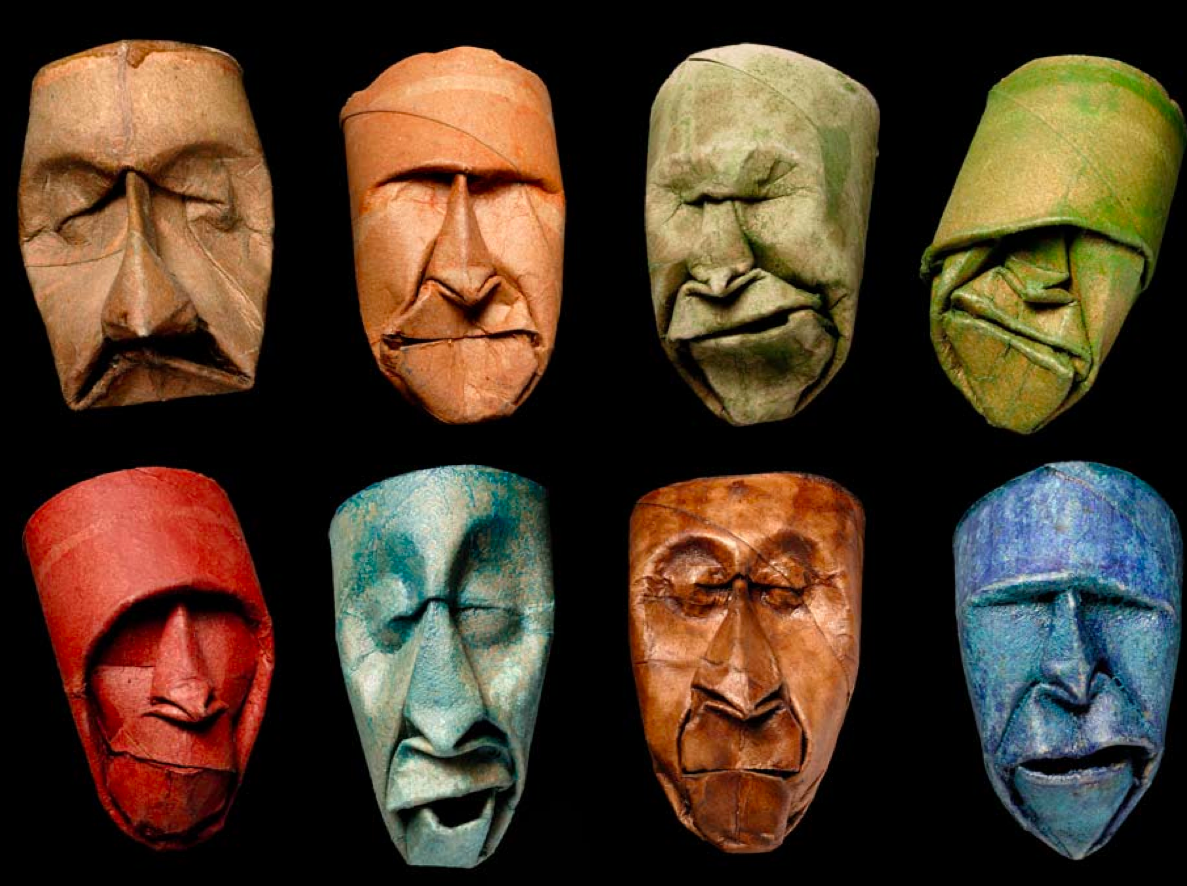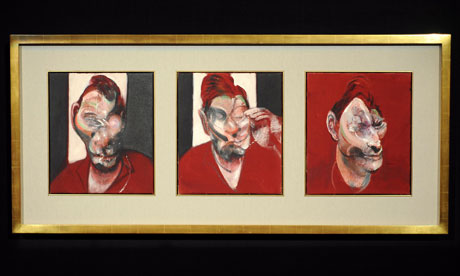
Friday, April 12, 2013
Portals - Leonardo da Vinci
One of the most famous paintings in the world, Leonardo da Vinci's Mona Lisa, has captivated people's imaginations for hundreds of years. Where are her eyes taking us?


Portals - Dorothea Lange
"The eyes are the windows to the soul" is actually an old English proverb according to reference.com. That said, consider the work of Dorothea Lange, who photographed hundreds of people for her job with the federal government's Works Progress Administration during the Depression years (early 1930s). One can only imagine what these people have seen during their lifetimes, and how it has shaped who they have become.
Wednesday, April 3, 2013
For my idea I thought of taking the next step in life, so the portal was full of objects that describe me and could potentially take me somewhere in the future. But I'm thinking of changing my idea to arawing of a hobby of some sort that I love, which acts like a portal I use to escape or find my peace? I'm not sure yet, it's a difficult theme!
Portals - Valentina Plishchina
Valentina Plishchina has used mixed media to effectively convey a dreamlike composition based on multiple portals. Do your dreams offer potential imagery for you to tap into for this project?
To view more of Valentina's artwork:
Portals - Joel Faber
Artist, Joel Faber, has created a number of computer art pieces with portals as the theme. His work can look futuristic, mysterious, inviting or menacing among other things. His use of repetition (shapes, color and value), pattern, and rhythm add up to artwork with an immediate impact. You cannot help, but be drawn into these images (no pun intended)!
However you define and address our current theme: portals, there are countless ways to interpret portals in your work, whether two dimensionally or three dimensionally. Consider how the formal elements of art (line, shape, form, space, texture, value and color), and principles of design ( balance, emphasis, movement, pattern, repetition, proportion, rhythm, variety and unity) can be harnessed to create a powerful, engaging work of art.


View more of Faber's work at:
http://joelfaber.deviantart.com/
Have fun with YOUR expression of portals! D. Exner
However you define and address our current theme: portals, there are countless ways to interpret portals in your work, whether two dimensionally or three dimensionally. Consider how the formal elements of art (line, shape, form, space, texture, value and color), and principles of design ( balance, emphasis, movement, pattern, repetition, proportion, rhythm, variety and unity) can be harnessed to create a powerful, engaging work of art.


View more of Faber's work at:
http://joelfaber.deviantart.com/
Have fun with YOUR expression of portals! D. Exner
Okay, its going to be a 3D design. A pyramid with one opening on one side like a door. On the inside will be a bunch of trippy designs like the ones above and to be able to view it, there will be a mirrior on the bottom inside. So when you open the door, you see the reflection of everything inside.
portals emediatly brought Pink Floyd to mind, hence the prism but im exciting. hope to god it looks awesome when done.
Portal Sketches
I really wanted to do this project in clay so I was thinking that I could do a sculpture. I'm confused on what to do though, its either between doing the sculpture of a skeleton bride sitting or the Pandora's box one where everything is escaping. Any ideas are gladly appreciated!
Tuesday, April 2, 2013
Marie Santoro Sketches
My idea for this theme stemmed from my writing. When I write, I can see the story in my head, playing out like a movie, and then I interpret that into words. I'm taken somewhere else, where I can experience the story I want to tell in a unique way. I'm still working on how this can be accurately shown in an art piece, but so far I plan to use a sort of typography. My sketch doesn't show it very well, but I want the scene from my story to be made out the actual text of the story. Here's what I got so far:
Thursday, March 21, 2013
Monday, March 4, 2013
Thursday, February 28, 2013
Marie Conflict Sketch
For this piece, I am thinking about showing an inner conflict. As artists, we all have felt that frustration one time or another of not knowing what to do. It's a conflict of ideas. To depict this, my first idea was putting the artist, just an average person, stuck at the bottom of a deep hole with blank canvases coming out of the ground. I may change this later, though. Any suggestions?
Wednesday, February 27, 2013
Conflict/Resolution with Nancy Spero
Nancy Spero
Protester of social ills and champion of women and equality, Nancy Spero made richly layered, bold visual statements. She freely appropriated images from Art History as well as contemporary media to engage the viewer in her discussion of issues and current events.
The following excerpt gives a broad overview of her life's work:
"Her work since the 1960s is an unapologetic statement against the pervasive abuse of power, Western privilege, and male dominance. Executed with a raw intensity on paper and in ephemeral installations, her work often draws its imagery and subject matter from current and historical events such as the torture of women in Nicaragua, the extermination of Jews in the Holocaust, and the atrocities of the Vietnam War. Spero samples from a rich range of visual sources of women as protagonists—from Egyptian hieroglyphics, seventeenth-century French history painting, and Frederick’s of Hollywood lingerie advertisements. Spero’s figures co-exist in nonhierarchical compositions on monumental scrolls, and visually reinforce principles of equality and tolerance."
This site also has a very informative video clip interviewing Nancy Spero!




Protester of social ills and champion of women and equality, Nancy Spero made richly layered, bold visual statements. She freely appropriated images from Art History as well as contemporary media to engage the viewer in her discussion of issues and current events.
The following excerpt gives a broad overview of her life's work:
"Her work since the 1960s is an unapologetic statement against the pervasive abuse of power, Western privilege, and male dominance. Executed with a raw intensity on paper and in ephemeral installations, her work often draws its imagery and subject matter from current and historical events such as the torture of women in Nicaragua, the extermination of Jews in the Holocaust, and the atrocities of the Vietnam War. Spero samples from a rich range of visual sources of women as protagonists—from Egyptian hieroglyphics, seventeenth-century French history painting, and Frederick’s of Hollywood lingerie advertisements. Spero’s figures co-exist in nonhierarchical compositions on monumental scrolls, and visually reinforce principles of equality and tolerance."
This site also has a very informative video clip interviewing Nancy Spero!
http://www.pbs.org/art21/artists/nancy-spero




Kurt Conflict Sketches
For conflict and resoluton I've decided to do a drawing that depicts a soldier returning from war. It follows my last pen drawing, the idea is that it shows how there is constant conflict wherever he goes within his mind, as he can't forget what happened to him and how he lost his friends in combat. The picture will represent the conflict this solider deals with and how he works to resolve it, trying to reform back to a civilain lifestlye.
Conflict/Resolution Thomas Hirschhorn
Conflict and/or Resolution
Thomas Hirschhorn
Thomas Hirschhorn is a Swiss artist who is known for his sprawling works that transform traditional white cube spaces into absorbing environments tackling issues of critical theory, global politics, and consumerism. He engages the viewer through superabundance. Combining found imagery and texts, bound up in low-tech constructions of cardboard, foil, and packing tape, he props imagistic assaults in a DIY-fashion that correlates to the intellectual scavenging and sensory overload designed to simulate our own process of grappling with the excess of information in daily life. Created from the most basic everyday materials, his monumental works are concerned with issues of justice and injustice, power and powerlessness, and moral responsibility.http://www.arndtberlin.com/website/artist_1030



Hirschhorn confronts us with our out of control consumerism by assaulting us with over the top amounts of visual stimulation. Is there something you see as a glaring conflict? How can you best communicate the conflict? Do you prefer to focus on the potential resolutions to the conflicts you encounter?
Tuesday, February 26, 2013
Conflict and/or Resolution... Peter Menzel
Peter Menzel
Photographer, Peter Menzel's book, Material World, goes far beyond the desparity of wealth around the globe. In documentary fashion, Menzel confronts the American consumer mentality with images of average families around the world. Global economics, environmentalism and social justice issues all come to the forefront in this collection of photographs.
The following is an excerpt from an interview with Peter Menzel:
Where did you get the idea for Material World?
PETER: Freelancing in Somalia during their civil war and in Kuwait right after the first Bush War, I had some rather intense experiences that made life in the U.S. seem rather shallow and superfluous. Previous to those eye-opening events, I had the displeasure of experiencing a twenty-year marriage end in divorce. Sitting in my office early one morning, listening to NPR, which is the way I like to start every day, I heard an amazing piece on the marketing of Madonna's autobiographic book called SEX. The book was a sensation in the U.S. The radio report ended with Madonna singing, "I am living in a material world and I am just a material girl," or something close. I thought it was spot on. We live in an idiotic capitalist self-indulgent society where the sex life of a pop star is more important than impending starvation, land mines and child soldiers in Africa, or more interesting than the world's biggest man-made natural disaster in oil fields of the Middle East.
Quite literally, it took about a minute to come up with the concept and title for Material World: dozens of statistically average families from every corner of the world take all their stuff outside of their house for a big portrait. This way, all of my fellow, greedy, shallow American neighbors could compare themselves to the rest of the world and see if they were really better off. I also got the idea for an interactive CD-ROM at the same time.



Conflict and/or Resolution Joan & Adrian Raeside
Joan and Adrian Raeside
Joan and Adrian Raeside, mother and son, share their creative storytelling skills in the series of books based on Dennis the Dragon. Originally written and illustrated for children, the lessons these books provide are as much for adults as they are for children of all ages. What a wonderful way to communicate the scope of conflict and the possibility of arriving at a resolution!
The following is a short history of Dennis the Dragon. Following Dennis are just a few of Adrian Raeside's editorial cartoons, which deal with many social and environmental conflicts.
DENNIS the DRAGON The continuing adventures in the popular Dennis the Dragon series, further expanding the themes of environmental and social responsibility in delightfully whimsical ways.
Each book begins with a situation or problem, usually created by Dennis’ irresponsible dragon family. Dennis must track down the source of the problem, then find a solution to it. Young readers will eagerly anticipate each new adventure to see how badly Dennis’ dragon family mess things up and the unique ways Dennis comes up with to put things right. Part of the humor in the series is the quirky co-existence between Dennis’ careless dragon family and the long-suffering residents of Dragonville.
The positive message running through all the Dennis books is that every problem has a solution and each of us has the power to solve it and make the world a better place.
Created by veteran editorial cartoonist Adrian Raeside, the upbeat determination of Dennis the smokeless dragon will continue to delight and inspire young readers and adults alike.
The Dennis the Dragon book series is based on a character created by Adrian’s mother, Joan Raeside, in 1964. Adrian grew up in New Zealand, at a time when children’s books were scarce and expensive, so Adrian’s mother wrote her own children’s books. A few of them, including Dennis the Dragon, were privately published as limited editions on the family’s letterpress in their basement. Adrian went on to a successful career as a syndicated cartoonist and published author, but his mother passed away before Adrian re-illustrated and published the original Dennis book in 1994. Dennis the Dragon was met with wide acclaim from children and adults alike and the success of the first Dennis book inspired Adrian to write and illustrate two other Dennis titles which were published as: Dennis and the big Cleanup and Dennis and the Fantastic Forest.
http://www.dennisthedragon.com/about.html



Monday, February 25, 2013
Conflict and Resolutioning!
Hello!?!
Let's start the post a bit heavy. Maus by Art Spiegelman is a the story of his father surviving The Holocaust. The story is told in an interesting way. The Jews are depicted as mice, Nazis are depicted as cats, and there are several other animals shown to represent other different people. This is one of the first 'Graphic Novels' taken seriously by people outside of the comic book world, and for good reason. It touches on a very serious subject and doesn't compromise any of its intelligence.

"My Red Bike" by concept artist Bobby Chiu shows what seems to be a fitting end to a little conflict! EEK!
-Bustamante
Let's start the post a bit heavy. Maus by Art Spiegelman is a the story of his father surviving The Holocaust. The story is told in an interesting way. The Jews are depicted as mice, Nazis are depicted as cats, and there are several other animals shown to represent other different people. This is one of the first 'Graphic Novels' taken seriously by people outside of the comic book world, and for good reason. It touches on a very serious subject and doesn't compromise any of its intelligence.
La Pistola y El Corazon (The pistol and the heart) is a painting by artist George Yepes. I feel like the poses and gaze of the figures shows that a conflict either just begun or has just been resolved.... What do you think!?

"My Red Bike" by concept artist Bobby Chiu shows what seems to be a fitting end to a little conflict! EEK!
-Bustamante
Conflict &/or Resolution
BERLIN WALL
As we embark on a new topic, Conflict and/or Resolution, you could look to political conflicts for inspiration. This is a photograph of the Berlin Wall which was constructed in 1961 to divide Eastern Communist Germany from Western Socialist Germany. It was quite literally a symbol of a political conflict that divided countries, nations and even families, and was built to keep easterners in and westerners out. Many people tried to escape the confines of Eastern Germany and lost their lives doing so. In 1989, that all changed when the wall was finally torn down. However, so as not to forget this terrible time, Berlin has left behind portions of the wall and artistic memorials as reminders of this conflict and its resolution.
Portion of the wall in Potsdamer Platz, Berlin
Memorial strip that marks the path of the wall.
YINKA SHONIBARE
Yet another way to look at the topic could be cultural.
This is a sculpture called Dysfunctional Family, by Yinka Shonibare. Shonibare was born in England, moved to Nigeria when he was 3 and then came back to England for college and now lives and works there. His work deals with colonisation, cultural melding, conflicts in identity when you are pulled between two cultures, and how those issues resolve together or don't. In this piece we have aliens wrapped in what we consider to be traditional African fabric, and there are some deeper meanings going on here. What do aliens represent? Could we be dealing with beings form other worlds coming together and trying to function? But wait, the title tips us off to the fact that there's a dysfunction, though it does call this a family as well. So is this a chosen family or one that is forced upon them?
The fabric that these figures are wrapped in is also and intentional choice because, though we associate it with Africa and it's considered a cultural symbol for Africa, it did not originate in Africa. The fabric actually came from Holland, but has been adopted and melded into another culture. As you can hopefully see, Shonibare addresses ideas of mixed cultural identities and the conflicts and resolutions they entail.
M.C. ESCHER
Another way I think you could interpret the theme is through a structural conflict and resolution in you piece.
This is M.C. Escher's Sky and Water from 1938. In the middle you have an interlocking, interdependent tension that resolves into a single bird or fish on either end. Are these elements clashing together in the middle or does it flow from top to bottom, from resolved to interlocking to resolved again? Maybe it's both. :) It certainly is a visual puzzle.
BERLIN WALL
As we embark on a new topic, Conflict and/or Resolution, you could look to political conflicts for inspiration. This is a photograph of the Berlin Wall which was constructed in 1961 to divide Eastern Communist Germany from Western Socialist Germany. It was quite literally a symbol of a political conflict that divided countries, nations and even families, and was built to keep easterners in and westerners out. Many people tried to escape the confines of Eastern Germany and lost their lives doing so. In 1989, that all changed when the wall was finally torn down. However, so as not to forget this terrible time, Berlin has left behind portions of the wall and artistic memorials as reminders of this conflict and its resolution.
Portion of the wall in Potsdamer Platz, Berlin
Memorial strip that marks the path of the wall.
YINKA SHONIBARE
Yet another way to look at the topic could be cultural.
This is a sculpture called Dysfunctional Family, by Yinka Shonibare. Shonibare was born in England, moved to Nigeria when he was 3 and then came back to England for college and now lives and works there. His work deals with colonisation, cultural melding, conflicts in identity when you are pulled between two cultures, and how those issues resolve together or don't. In this piece we have aliens wrapped in what we consider to be traditional African fabric, and there are some deeper meanings going on here. What do aliens represent? Could we be dealing with beings form other worlds coming together and trying to function? But wait, the title tips us off to the fact that there's a dysfunction, though it does call this a family as well. So is this a chosen family or one that is forced upon them?
The fabric that these figures are wrapped in is also and intentional choice because, though we associate it with Africa and it's considered a cultural symbol for Africa, it did not originate in Africa. The fabric actually came from Holland, but has been adopted and melded into another culture. As you can hopefully see, Shonibare addresses ideas of mixed cultural identities and the conflicts and resolutions they entail.
M.C. ESCHER
Another way I think you could interpret the theme is through a structural conflict and resolution in you piece.
This is M.C. Escher's Sky and Water from 1938. In the middle you have an interlocking, interdependent tension that resolves into a single bird or fish on either end. Are these elements clashing together in the middle or does it flow from top to bottom, from resolved to interlocking to resolved again? Maybe it's both. :) It certainly is a visual puzzle.
Conflict and/or Resolution
Conflict and/or Resolution 2/25/13 – 3/21/13
A conflict is typically defined as a: disagreement, clash, divergence, difference, argument, variance, quarrel, inconsistency, discord, contradiction, dispute, tension, controversy, fracas, or opposition. It can occur within a person and, of course, between people, groups and nations.
A person could be torn between two courses of action due to a conflict of interests, values or loyalties. You are probably familiar with disagreements/conflicts between siblings, parents and children, between parents (potentially leading to divorce), advocacy groups and lobbies. Whenever there is a law suit there is a conflict between “parties”. They go to court seeking justice or a “just settlement” in support of their point of view or cause.
On a larger scale, we see conflicts between ethnic groups, which has led to genocide, strong disagreements within a country have led to civil wars, . Any and all wars are obvious examples of conflict.
Resolution doesn’t usually come as easily as conflict for some reason, but it is the only way to really deal with strong differences. Creating peace is a long and difficult process. Ideally, agreement could be found before a situation reaches a fevered pitch. The only way to reach that point is through honest communication. Artists have the ability to reach out and communicate when words often fail us.
Do you see a situation that you want to address through your artwork? Have you personally experienced something that prompts you to communicate it with your artistic sensibilities? Art can often bring people from differing perspectives together. Sometimes, people are led to healing or catharsis as a result of expressing their feelings through art.
Are you inspired by a quotation, poem , speech, news article, song, play, book or movie based on current events or personal experience? This is an opportunity for you to explore the possibilities of conflict and/or resolution.
Please give each other feedback by Friday, March 4th on our Studio Art Blog.
D. Exner
Sunday, February 3, 2013
Emotions Concept
For my emotions piece, I decided to go with the emotion of want or longing for something. To convey this, I was inspired by the Hans Christian Anderson story "The Little Mermaid," where, of course, all she wants is to be on land. I originally planned on using an adult mermaid, but I'm also entertaining the idea (on recommendation of Mr. B ) of using a child mermaid, and using a more indirect approach. What do you think?
Friday, February 1, 2013

So i have already started my project, but I didnt draw any pictures because I am going off of this one i found roughly. I think these masks are really cool, and have a lot of life! so I want to make something similar. I already have one mask made from the mold,but obviously it needs a lot of work. I am not entirely sure which emotions I am going to do yet, so which six do you guys think are the six most major emotions??
kurt emotion sketches
For my emotions piece, I've decided to do a self-portrait, and make myself black and white. But the clothes I'm wearing and sunglasses will have color, and there will be different colors splattered beind representing my emotions. Also the sunglasses will represent how I really don't show my emotions often. I haven't decided which media to use, either acrylics or watercolers, what do you think?
Monday, January 28, 2013
Emotions!
Hello!
Sometimes it's easy to forget that emotions don't all need to be heavy or extremely sad! There are tons of emotions and tons of ways to show them!
Jason Seiler
Jason Seiler is originally a caricature artist, this can be seen in the exaggerated poses and physical features his figures have. The exaggeration and emphasis is used to emphasize whatever particular characteristic or emotion the person is showing.
Steven Assael
Steven Assael is a much more subtle, realist, figurative painter. He's able to depict figures' stories through the use of costumes and not much facial expression.
Sometimes it's easy to forget that emotions don't all need to be heavy or extremely sad! There are tons of emotions and tons of ways to show them!
Jason Seiler
Jason Seiler is originally a caricature artist, this can be seen in the exaggerated poses and physical features his figures have. The exaggeration and emphasis is used to emphasize whatever particular characteristic or emotion the person is showing.
Notice that here a more "tough" expression is emphasized...
While a goofier expression is emphasized here.
For a caricature, this is one of the more emotional paintings I've seen. This was a caricature of Saddam Hussein as he was on trial for multiple war crimes. The expression locked on his face is one of fear but of defiance, and the exaggerated features help emphasize this.
Francis Bacon
I love BACON! Seriously, I do. Francis Bacon, that is. (but i do love the food)
Francis Bacon has a fantastic, unique, way of bending and distorting figures so that what he eventually is portraying is pure emotion. The painting of the pope on the left here was a done by Velazquez around 1650, Francis Bacon completed his "study" of it in 1953.
One great way to show the same figure several times, focusing on distortion and emotion is to use a Triptych!
Bacon, Triptych!
Steven Assael is a much more subtle, realist, figurative painter. He's able to depict figures' stories through the use of costumes and not much facial expression.
What he actually does is depict these characters in a very straightforward manner and lets you add any sort of emotional qualities to them. For example, when we look at the fire fighter we associate him with being heroic and possibly remember specific events such as September 11th.
What emotions or qualities do you associate with the second picture?
-Bustamante!
Subscribe to:
Posts (Atom)






























